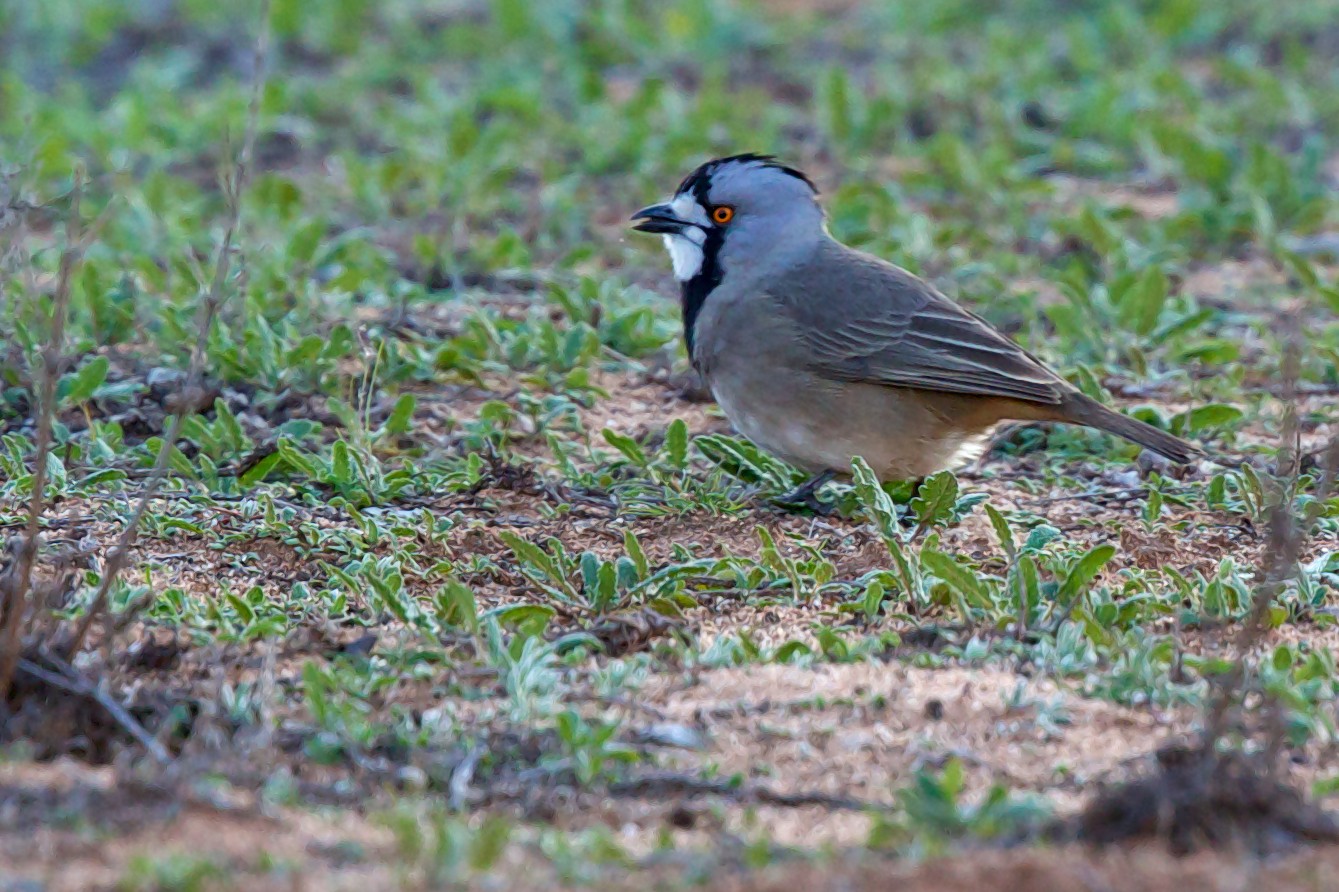Crested Bellbird
A species of Crested Bellbird Scientific name : Oreoica gutturalis Genus : Crested Bellbird
Crested Bellbird, A species of Crested Bellbird
Botanical name: Oreoica gutturalis
Genus: Crested Bellbird
Content
Description General Info
 Photo By sunphlo , used under CC-BY-SA-2.0 /Cropped and compressed from original
Photo By sunphlo , used under CC-BY-SA-2.0 /Cropped and compressed from original Description
Adults range in size from 19 cm to 23 cm in length. Adult males have grey heads with a raised black crest, a white forehead and throat, and a prominent black breast, while the rest of the body is grey or brown. Females and immature birds are less prominently coloured than the males, lacking the black breast and having a smaller, unraised black crest. Both males and females have orange-red eyes. Similar species include wedgebills and the Western whipbird, which female and juvenile bellbirds resemble. 
Size
23 cm
Nest Placement
Ground
Feeding Habits
Crested Bellbird predominantly consumes invertebrates and seeds, foraging alone or in pairs by hopping on the ground or moving between shrubs and low branches. They sometimes join mixed-species flocks for feeding.
Habitat
Crested Bellbird is typically found in semi-arid regions, inhabiting diverse dry wooded habitats such as acacia scrublands, eucalypt woodlands, including mallee, and chenopod plains. This species prefers areas with a mixture of spinifex and scattered trees, avoiding the humid eastern and far northern Australia, as well as the extreme southwest. The bird is more common towards the interior and semi-arid coastlines, extending across most of the continent but is threatened in some regions, like Victoria, where its range has been greatly reduced.
Dite type
Insectivorous
General Info
Feeding Habits
Bird food type
Distribution Area
The bird's habitat is usually found throughout the semi-arid coastlines and towards the drier interior areas of Australia, particularly in areas dominated by acacia scrublands, eucalypt woodlands, spinifex and chenopod (saltbush) plains or dunes. The species is sedentary or locally nomadic and is distributed throughout most of the continent including; towards the west of the Great Dividing Range, in the south of tropical northern Australia, and through South Australia to the west coast of Western Australia. The bellbird avoids the far north and the humid eastern and extreme south-western regions. The species is listed as threatened in Victoria, as it has disappeared from well over half of its historical range. 
Species Status
The range of the crested bellbird has been contracted due to habitat destruction from land clearance, as this species is particularly susceptible to fragmentation. Crested bellbirds are not listed as threatened on the Australian Environment Protection and Biodiversity Conservation Act 1999. However, their conservation status varies from state to state within Australia. For example: The crested bellbird is listed as threatened on the Victorian Flora and Fauna Guarantee Act (1988). Under this Act, an Action Statement for the recovery and future management of this species has not yet been prepared. On the 2007 advisory list of threatened vertebrate fauna in Victoria, the crested bellbird is listed as near threatened. 
Scientific Classification
Phylum
Chordates Class
Birds Order
Perching birds Family
Australo-papuan bellbirds Genus
Crested Bellbird Species
Crested Bellbird